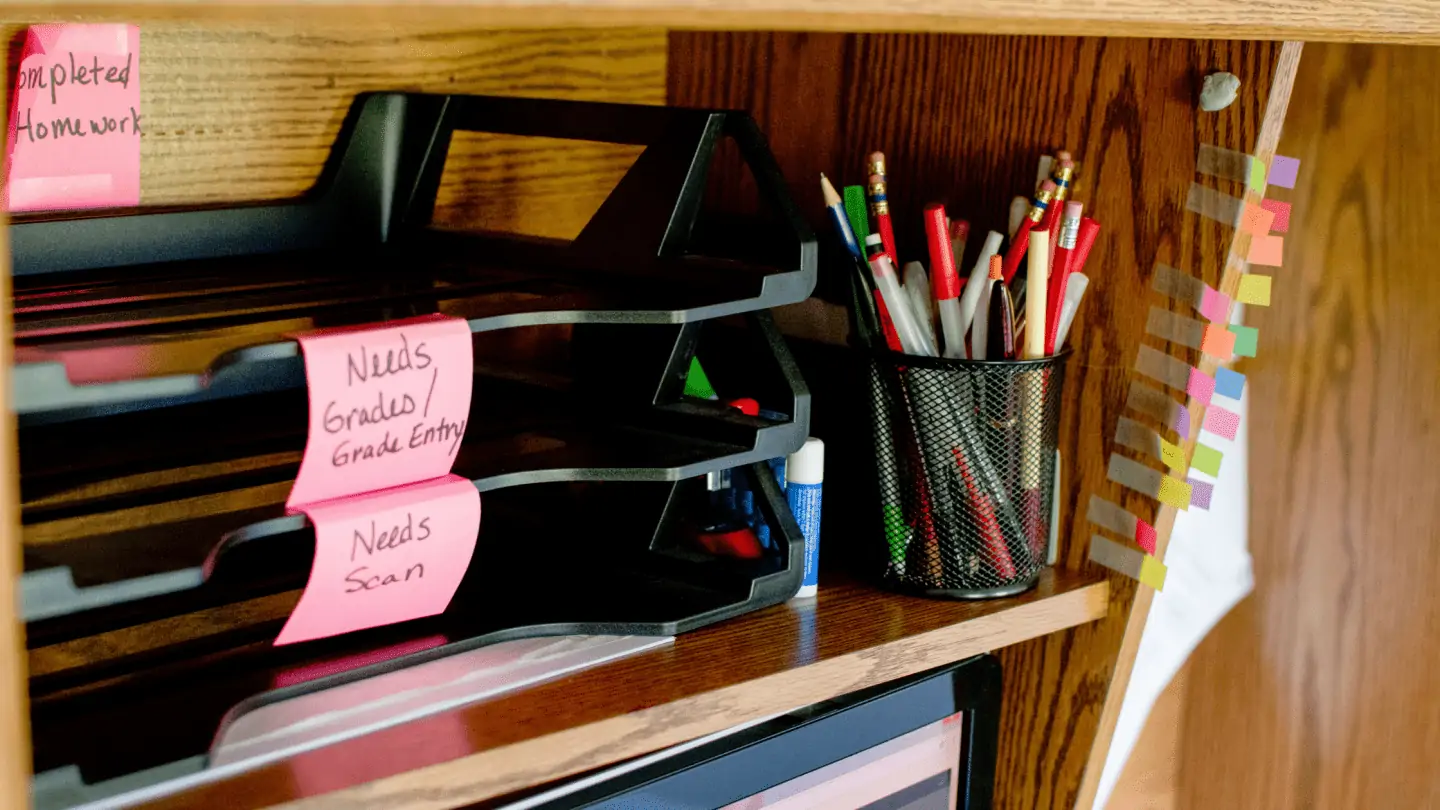How to Keep Records for Homeschool | Expert Tips and Tools
Knowing how to keep records for homeschool is crucial for a smooth and successful educational journey.
Homeschooling your children opens up a world of personalized education, but it also comes with its own set of administrative tasks.
Accurate record keeping isn’t just about meeting state requirements; it also helps track your child’s academic progress and can be crucial for future transitions to private school, public school, or college.
Here, I’ll share the best methods for maintaining thorough and organized homeschool records.
I’ve curated these strategies to ensure they are practical and adaptable, whether you’re using a Christian, secular homeschool curriculum, unschooling, or something in between. Each method is designed to help you keep detailed records without overwhelming your schedule.

**This post may contain affiliate links. As an Amazon Associate and a participant in other affiliate programs, I earn a commission on qualifying purchases.**
Why Record-Keeping Matters
Effective record-keeping serves multiple purposes. It demonstrates compliance with state homeschooling laws, provides a clear academic history for your child, and facilitates smooth transitions to traditional schooling environments if needed.
Additionally, having a comprehensive record is essential for high school students aiming for a diploma or preparing for college admissions.
Essential Records to Maintain
- Attendance Logs
- Keeping track of school days and hours is crucial, especially if your state has specific attendance requirements.
- Utilize a free printable homeschool planner or digital planner to log daily activities and hours. This ensures you’re complying with compulsory education laws.
- Lesson Plans and Curricula
- Document your homeschool curriculum, including homeschool workbooks, online courses, and any educational programs you use. This is particularly useful for home-schoolers following specialized curricula like a Christian homeschool program.
- Include a description of the subjects covered and the educational goals for each school year. This makes it easier to evaluate your child’s learning experience.
- Grades and Assessments
- Maintain records of tests, quizzes, and standardized test scores. These records can be invaluable when applying for a high school diploma or preparing homeschool transcripts for college.
- Use grading rubrics to evaluate assignments, ensuring consistent and fair assessment. This is especially important for parents who are new to homeschooling.
- Portfolios of Student Work
- Compile samples of your child’s work, such as essays, art projects, and science experiments. This method is beneficial for unschooled children and those following an individualized learning style. Using a homeschool portfolio template can help organize these samples effectively.
- A portfolio showcases academic achievement and progress in a tangible form, making it easier to track and assess your child’s academic development. Consider using a homeschool portfolio checklist to ensure you include all necessary elements, making the process streamlined and thorough.
- Extracurricular Activities
- Record participation in extracurricular activities like sports, music, and field trips. This not only highlights your child’s interests but also their socialization and well-rounded education.
- Include details about co-ops or support groups your child is involved in, which can enhance their learning and social experiences.

Tools and Resources
- Digital Solutions
- Online homeschooling platforms and apps can simplify record-keeping. These tools often include features for tracking school attendance, grades, and lesson plans.
- Resources like Homeschool Legal Defense Association (HSLDA) offer templates and legal guidance, ensuring compliance with state education laws.
- Traditional Methods
- Physical binders and notebooks are effective for those who prefer a hands-on approach. These can be used to store completed work, attendance logs, and lesson plans.
- Use a dedicated space to store these materials, making it easier to organize and retrieve records when needed.
- State-Specific Requirements
- Familiarize yourself with your state’s homeschooling laws via the Department of Education’s website. Each state has different requirements for homeschooling parents.
- Ensure compliance by following state guidelines for record submission and standardized testing. This might include keeping a portfolio or maintaining a record of standardized test scores.
Making Record-Keeping Manageable
To avoid feeling overwhelmed, integrate record-keeping into your daily routine. Spend a few minutes each day updating attendance logs and jotting down key activities.
At the end of each week, review and organize any assessments or completed work. This consistent approach prevents record-keeping from becoming a daunting task.

Turning Record-Keeping into a Positive Experience
Rather than viewing record-keeping as a chore, consider it an opportunity to reflect on your child’s educational journey. Reviewing progress and accomplishments can be incredibly rewarding and motivating. It also provides a structured way to celebrate milestones and set future goals.
Homeschoolers, including those in Christian homeschooling or using online homeschool programs, will find that detailed records help not only with compliance but also in crafting a rich, individualized education experience.
The balance between structured academic records and the flexibility of homeschooling curricula can enrich your child’s learning environment.

Whether you use formal schooling methods or a more relaxed unschooling approach, organized records are key to a successful homeschooling experience.
Homeschooling parents should also consider the various resources available to support them in this task.
From online curriculums to local support groups, these resources can offer both guidance and practical tools to simplify the record-keeping process.
Utilizing these can make the difference between a stressful experience and a rewarding educational journey for both parents and children.
Last Updated on 2 September 2024 by Clare Brown





